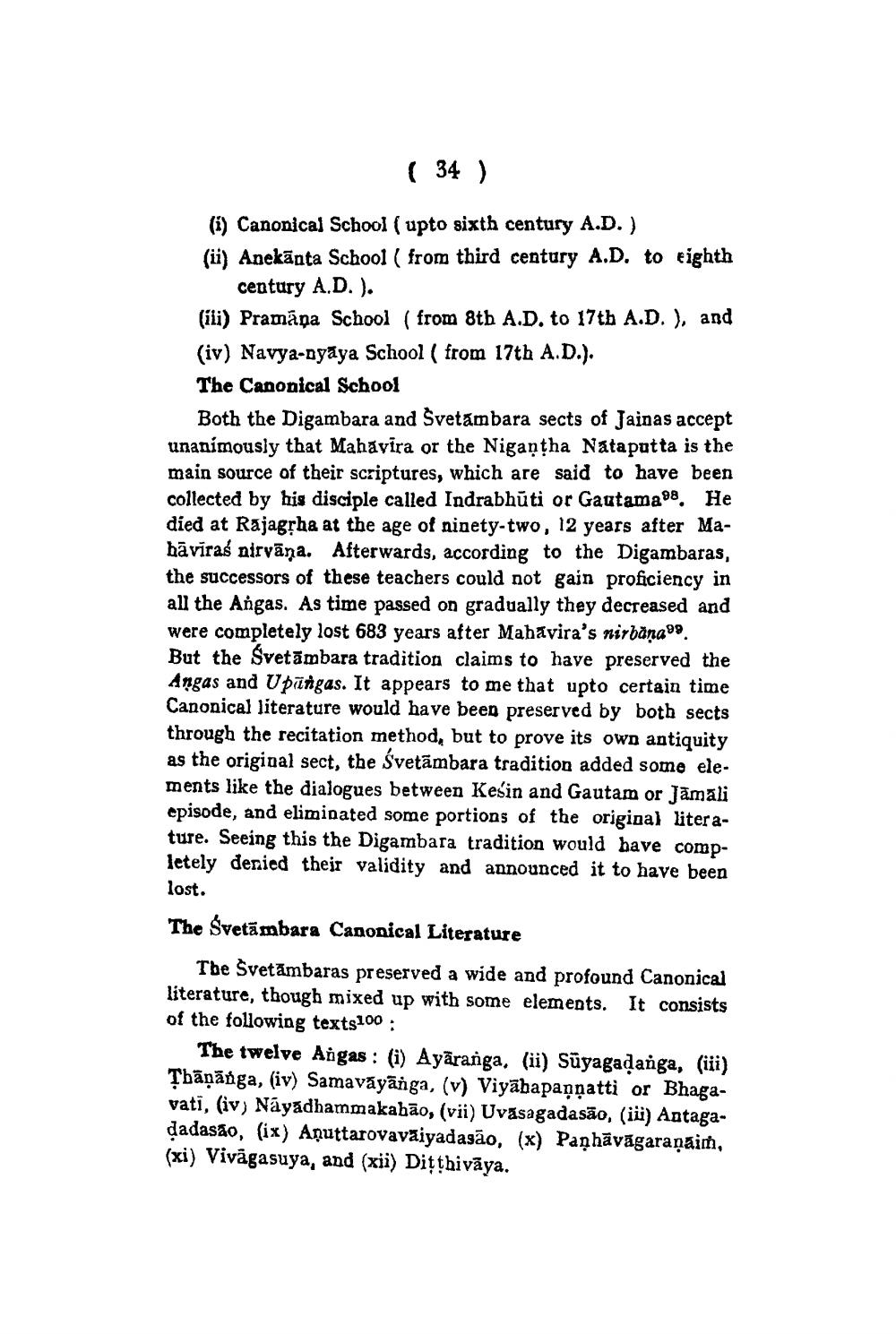________________
( 34 )
(i) Canonical School ( upto sixth century A.D.) (ii) Anekānta School ( from third century A.D. to eighth
century A.D.). (ili) Pramāņa School ( from 8tb A.D. to 17th A.D.), and (iv) Navya-nyāya School ( from 17th A.D.). The Canonical School
Both the Digambara and Svetambara sects of Jainas accept unanimously that Mahavira or the Nigaạtha Nataputta is the main source of their scriptures, which are said to have been collected by his disciple called Indrabhūti or Gautama98. He died at Rajagrha at the age of ninety-two, 12 years after Mahāviraś nirvana. Afterwards, according to the Digambaras, the successors of these teachers could not gain proficiency in all the Angas. As time passed on gradually they decreased and were completely lost 683 years after Mahavira's nirbana". But the Svetāmbara tradition claims to have preserved the Angas and Upūngas. It appears to me that upto certain time Canonical literature would have been preserved by both sects through the recitation method, but to prove its own antiquity as the original sect, the Svetāmbara tradition added some elements like the dialogues between Kesin and Gautam or jāmali episode, and eliminated some portions of the original literature. Seeing this the Digambara tradition would have completely denied their validity and announced it to have been lost.
The Svetāmbara Canonical Literature
The Svetāmbaras preserved a wide and profound Canonical literature, though mixed up with some elements. It consists of the following texts100 :
The twelve Angas: (i) Ayāranga, (ii) Süyagadanga, (iii) Tbāņāöga, (iv) Samavāyānga, (v) Viyābapaņņatti or Bhagavati, (iv) Náyadhammakabāo, (vii) Uvasagadasāo, (ii) Antagadadasão, (ix) Aņuttarovavaiyadasão, (x) Paṇhāvāgaraṇaim, (xi) Vivågasuya, and (xii) Diţthivāya.




